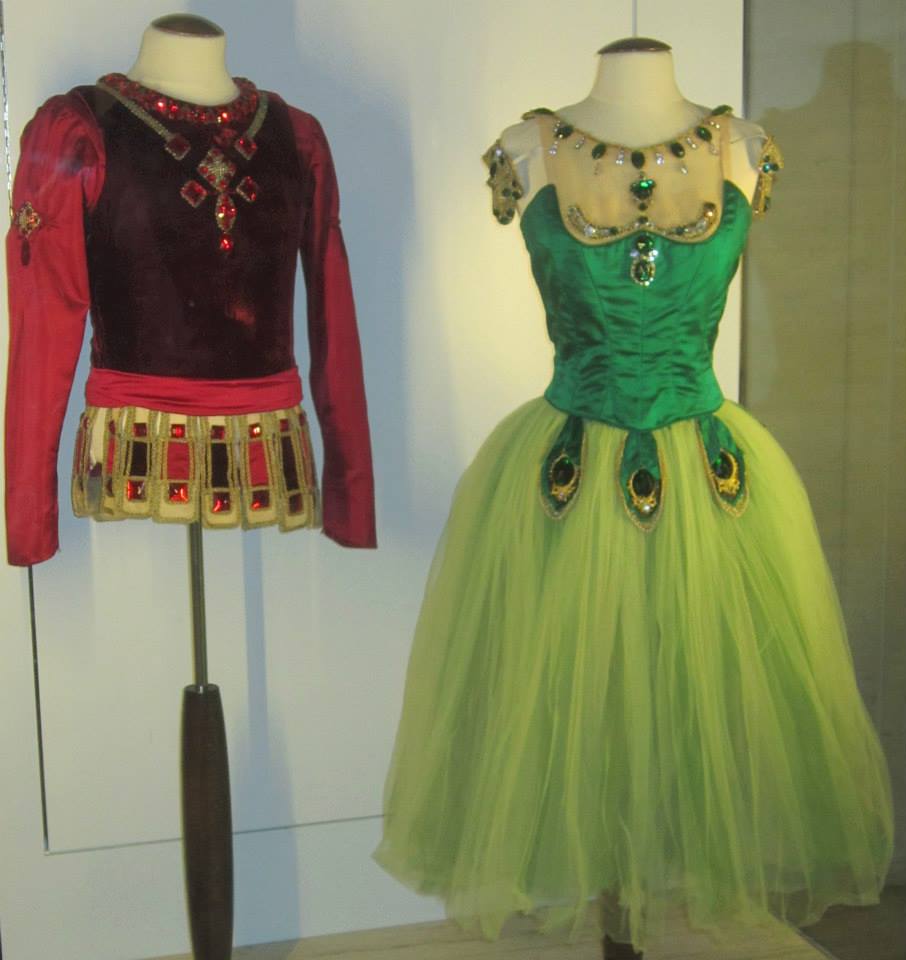Last week at the New York City Ballet I saw George Balanchine’s JEWELS, a full-length ballet in three parts, “Emeralds,” “Rubies” and “Diamonds”, created in 1967. There is a sense in which, when we see a Balanchine at the NYCB, which he co-founded, we are seeing a work “from the repertory”, and another in which we are seeing an historical reconstruction (there are vintage costumes from JEWELS on display in the lobby). But surely it must be asked, even at NYCB, to what extent a Balanchine ballet ought to be read or even performed differently as times change.
This is especially true of JEWELS, which anyone receptive to aesthetic experience should if possible attend: it is exquisite. Balanchine captures the pastoral green of the emerald, deploying the dancers in patterns that suggest a jeweler’s tray, tilted this way and that, as if to examine the gems; paired with the music of Fauré, it becomes a journey into the vexed and overgrown forest of Romanticism. The corps in “Diamonds” he arranges as though they were crowns and necklaces, classical and symmetrical, glinting and elegant, shelved aside gorgeous duets set in the lacrimose silver of Tschaikovsky’s score. And in the middle and finest part, “Rubies,” parsed to the music of Stravinsky (for whom Balanchine had a special affinity) is reified the haughtiness of the showcase, with come-to-me proffers of the thigh (a modernist variation of the hitchhiker’s pose) and the unleashing of a wonderful sense of terpsichorean abandon.
But what does it mean, in this age of the one-percent, to enjoy a ballet inspired by gems admired by Balanchine at Van Cleef and Arpels in a theater named after a Koch brother while surrounded by a well-heeled elite? There is something in the juxtaposition of JEWELS with the year 2014 that makes it hard to simply note that the arts have produced works of independent value despite a perennial entanglement with high-end patronage and move on. JEWELS reads on some level as an ode to conspicuous wealth, the dancers both representing gems and presenting them on their bosoms (presumably in costume form). It doesn’t have the innocent charm of Monroe singing “Diamonds are a Girl’s Best Friend,” which is easy enough to enjoy in the light of its own time and has, even at that, a satirical tone.
Maybe the ambiguous desire aroused by “Rubies” should be taken as a cautionary aesthetic, the green of “Emeralds” for the vice of avarice, the clear white of “Diamonds” as the glistered indifference of the ruling class. All of that might be there, but to think that the company’s audience would, in the main, be receptive to such nuances or even think of them is a naïve caprice. JEWELS could be about beauty for its own sake, to which I have no objection, but jewels are rarely if at all beautiful for their own sake. They exist for the sake of status and display, being seen on persons like the persons wearing them are at, well, the ballet. That Balanchine was a choreographer of genius and that the artists who perpetuate his work are exemplary goes a long way, but not the whole distance. JEWELS is gorgeous beyond belief, and I would not have missed it. Nor would I have swallowed it without question, or enjoyed it absent a critique of its implications.
JEWELS returns to New York City Ballet on multiple dates from April 19-May 1, 2016. For information, click here.
